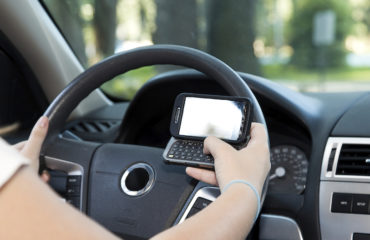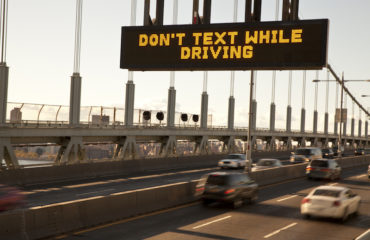April is Distracted Driving Awareness Month. This is a time to raise awareness of the dangers and cost of this growing epidemic. In 2012, distracted driving in the United States alone resulted in at least:
- 3,328 fatalities
- 410,000 injuries
Did you know that 40% of American teens say that they have been in a car when the driver used a cell phone in a way that put people in danger? Expert after expert now declares distracted driving an epidemic.
What is Distracted Driving?
What is distracted driving? It is performing any activity that is secondary to driving. Changing the radio station, reaching over for a purse or briefcase, eating while driving, reaching into the back seat because the children are arguing, are all examples of distracted driving.
To really examine distraction, there are three primary types. They are:
- Manual distractions
- Visual distractions
- Cognitive distractions
Any distraction while driving is one of the three, or a combination of them. Changing the temperature in the car is a manual distraction: you have taken your hands off the steering wheel. Looking at the radio or GPS display is a visual distraction: it is taking your eyes off the road. Thinking about last night’s party is a cognitive distraction: your brain is not focused on driving. Each distraction may not be as significant as others. Changing the temperature may be a brief interruption, while reaching into the backseat to search for an item may not be brief and involves more than one type of distraction.
Hands-Free is Not Risk-Free
One distraction recognized by everyone as significantly dangerous is texting while driving. The research reveals that someone who texts and drives is 23 times more likely to be in a crash. That is because texting uses all three forms of distraction: manual, visual, and cognitive.
People are recognizing that holding a phone and talking to someone is distracted driving, as well. However, many people have the mistaken belief that talking to someone on a hands-free phone while driving is safe. This could be a fatal mistake. Talking to someone while using a hands-free phone or while holding the phone is still talking to someone who is not physically present and it is a cognitive distraction. The mind is not focused on the driving.
A common question asked when this is discussed is what about passengers in the car? For an adult,[1] there are significant differences between having a passenger in the car and talking on a cell phone. With a passenger, she or he is able to spot and point out driving hazards. The person is another set of eyes. In fact, a passenger can recognize when traffic is challenging and just stop talking. None of that is true during a cell phone conversation.
Businesses Are Taking Action
In December 2011, based on both research and the crashes it investigated, the National Transportation Safety Board (NTSB) called for a nationwide ban on the use of cell phones while driving. Previously, in 2009, NTSB instituted an agency policy that no employee of NTSB shall use a cell phone while driving.
But it is not only NTSB that has instituted this policy. A few years back, the National Safety Council surveyed Fortune 500 companies about their cell phone policies. Looking at potential liability and employee safety, 18% of the companies that responded indicated they had instituted a complete ban on the use of cell phones while driving, including Shell Oil, DuPont, BP, Abbott, Cargill, and Time Warner Cable.
Notably, the vast majority of businesses indicated that there was no reduction in work production, and one-in-five indicated that they had seen a reduction in crashes and property damage.
It’s Not Worth the Risk
It is time to have a social stigma attached to driving while using a cell phone, just as it now is socially unacceptable to drink too much and drive. One way to start that change is for parents to model for their children what it is to be a safe driver, which includes not using a cell phone while driving. In the meantime, it is time for all of us to ask the real question: “What makes this phone call so important that I am going to risk my life and the lives of others.”








